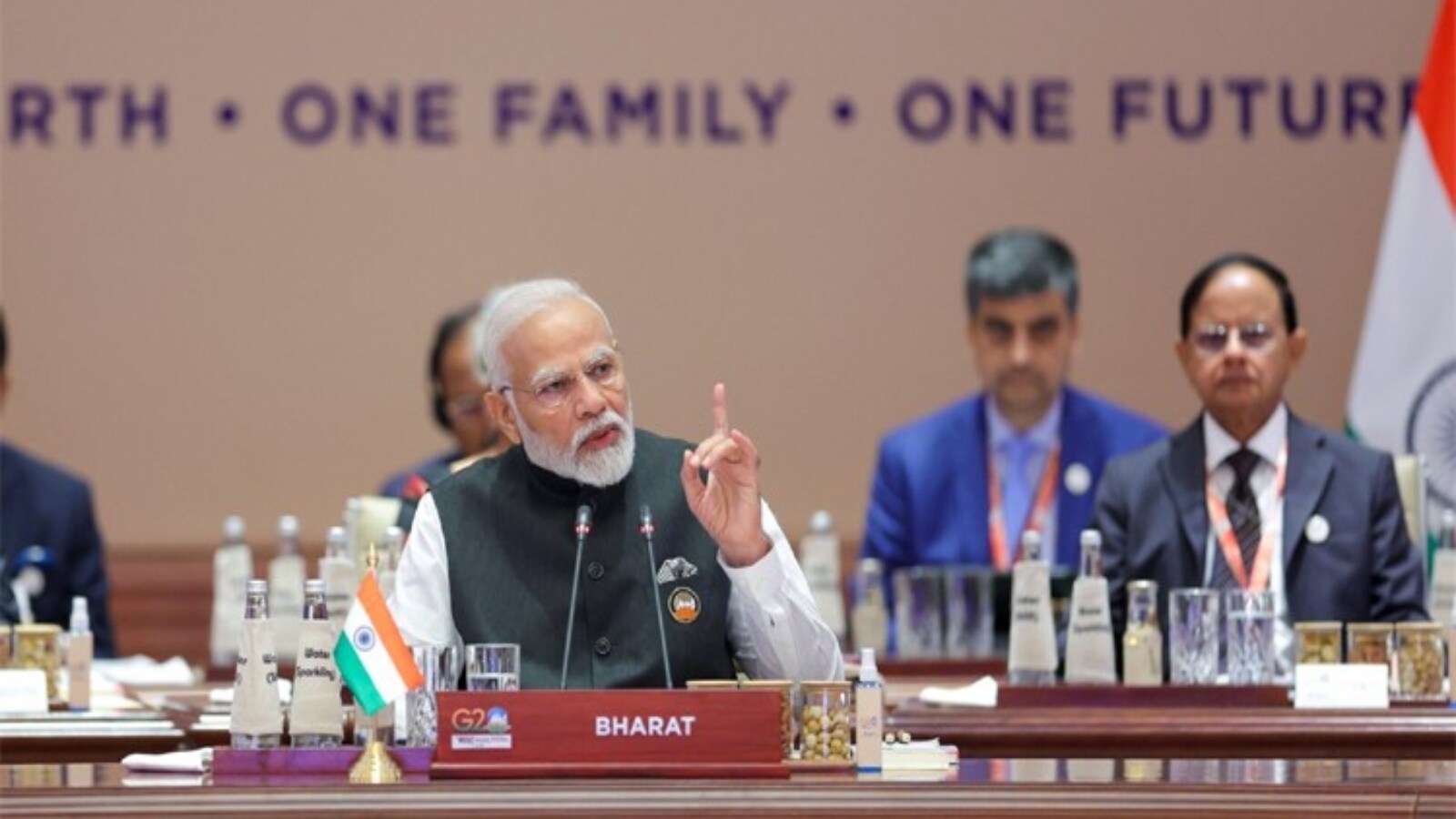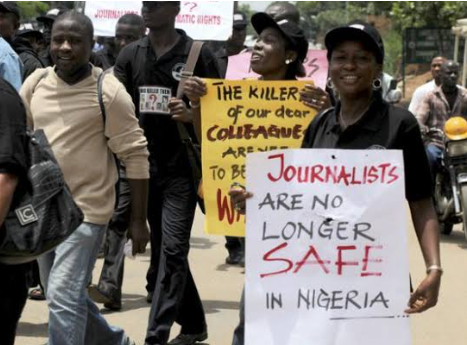By Karishma Jain,News18
Copyright news18

Prime Minister Narendra Modi turns 75 today. Over more than a decade in power, his imprint on India’s foreign policy has been defined by an attempt to shift the centre of gravity in global conversations towards the developing world. At a time when global governance is marked by deep divides and inequities, Modi has sought to position India as both a bridge-builder and an amplifier of the Global South.
From convening new forums like the Voice of the Global South Summit, steering the G20 to admit the African Union, supplying vaccines across continents during the pandemic, to pressing climate finance demands at UN conferences, PM Modi has consistently framed India as the voice of the Global South.
Defining The Voice Of The Global South
The “Global South” is not a new concept. It traces its roots to the Non-Aligned Movement and the post-colonial push for equality among newly independent nations. But in Modi’s hands, it has become both slogan and strategy. He has tied India’s rising economic weight and civilisational identity to the collective aspirations of developing nations, insisting that the time has come for them to help write global rules rather than be passive recipients.
PM Modi has repeatedly underlined that “most of the global challenges have not been created by the Global South. But they affect us more”, a reminder that developing nations often pay the highest price for crises like climate change, pandemics or debt even when they played little role in causing them.
It was during the inaugural Voice of the Global South Summit in January 2023, held virtually with participation from over 120 countries, that Modi most clearly articulated this stance. “Your voice is India’s voice. Your priorities are India’s priorities,” he told fellow leaders. The summit itself was designed as an innovation, an India-led attempt to give shape to a collective dialogue for countries historically excluded from elite decision-making forums.
Behind this framing lies what commentators describe as the “Modi Doctrine,” anchored in the Panchamrit pillars — Samman (honour), Samvad (dialogue), Samriddhi (shared prosperity), Suraksha (security), and Sanskriti evam Sabhyata (civilisational linkages).
Chairing The G20: Bringing The Global South To The High Table
India’s G20 presidency in 2023 offered PM Modi the largest platform to amplify this message. Under the theme “One Earth, One Family, One Future,” Delhi made Global South issues central—food and energy insecurity, debt crises, climate finance, digital divides, and women-led development.
The most symbolic outcome was the admission of the African Union as a permanent G20 member, a move personally championed by Modi. On the opening day of the summit, he announced: “With the African Union joining, we have made the G20 more inclusive.” It was described as a historic step towards justice for Africa and a diplomatic masterstroke that reshaped the forum’s balance.
But symbolism was not all. The New Delhi Leaders’ Declaration, achieved despite rifts over Ukraine, delivered tangible outcomes: the Green Development Pact for a Sustainable Future, a pledge to scale up climate finance from billions to trillions, new frameworks for food security and sustainable agriculture, commitments on digital public infrastructure, and the creation of a working group on women’s empowerment.
India also branded the presidency as a “People’s G20.” Over 220 meetings in 60 cities, cultural showcases from Konark to Nalanda, and participation from 67 million citizens turned what had once been an elite forum into what Modi called a “Jan Andolan” (people’s movement).
By the end of the presidency, even sceptics acknowledged that India had positioned itself as a “system shaper,” carrying the concerns of the developing world into the heart of global economic governance.
Africa Outreach
If the Global South is central to Modi’s diplomacy, Africa has been the continent where this framing has found its clearest expression. He has often said that India and Africa share “a common history of struggle against colonialism” and a common aspiration for dignity, development and self-reliance. Over the last decade, Africa has consistently been called a “top priority” in India’s foreign policy, but it was during his long five-nation tour in July this year that Modi showcased how this priority was being turned into action.
In Ghana’s Parliament, he mixed symbolism with strategy, describing the country as “a beacon of democracy, dignity and resilience” and quipping that India’s friendship was “sweeter than your Sugarloaf pineapple.” With President Mahama, he pledged support for Agenda 2063 and the African Continental Free Trade Agreement, framing India’s role as a partner in Africa’s own developmental vision rather than a prescriber of external models.
That theme continued in Namibia. Here, Modi revisited his ten guiding principles of India’s Africa policy first set out in 2018. He explicitly contrasted them with what he called neo-colonial models of debt and dependence, positioning India as a different kind of partner. Initiatives announced during the visit spanned renewable energy, healthcare, entrepreneurship, defence cooperation and what he described as “cheetah diplomacy.”
The symbolism of cheetahs returning to India from Namibia made headlines, but Modi linked it to a deeper message: India and Africa could work together on conservation, sustainability and innovation in ways that empowered local communities.
Solar projects through the International Solar Alliance, digital public infrastructure for payments and governance, and scholarships under the ITEC programme added heft to this narrative.
That emphasis found global expression when, under India’s G20 presidency earlier in 2023, the African Union was given a permanent seat at the table.
Beyond Africa: Latin America, The Caribbean And BRICS
The July tour also extended to Trinidad & Tobago, Argentina and Brazil. In Port of Spain, Modi celebrated the Indian diaspora’s role in shaping politics and culture, noting that “two remarkable women leaders—the President and the Prime Minister—proudly call themselves daughters of the Indian diaspora.” He announced the adoption of India’s UPI platform and promised agricultural support, prosthetic fitment camps, and expanded cooperation under the CARICOM format.
In Buenos Aires, the first bilateral visit by an Indian Prime Minister in 57 years, Modi explored cooperation in defence, energy and critical minerals with President Javier Milei. In Rio de Janeiro, he attended the BRICS Plus summit, where the Rio Declaration condemned the Pahalgam terror attack, endorsing India’s long-pending proposal for a Comprehensive Convention on International Terrorism.
Vaccine Maitri: Pandemic Diplomacy With A Southern Stamp
India’s Covid-19 vaccine initiative became a powerful symbol of South-South solidarity. Through Vaccine Maitri, India supplied more than 30.12 crore doses to 99 countries and two UN agencies. Of these, 1.51 crore were gifted to over 50 nations and 5.2 crore were distributed via COVAX, the global vaccine-sharing facility.
For many in Africa, the Pacific and the Caribbean, these shipments arrived at a time when wealthier nations were accused of hoarding doses. The political symbolism was as striking as the medical relief: small island states and least-developed nations openly acknowledged that it was Indian vaccines that had reached them first.
Climate Summits: From Panchamrit To Climate Justice
At COP26 in Glasgow, Prime Minister Modi announced what he called India’s “Panchamrit” — a five-part commitment on climate action. These included:
Achieving 500 GW of non-fossil electricity capacity by 2030.
Meeting 50 per cent of energy needs from renewables by 2030.
Reducing emissions intensity by 45 per cent from 2005 levels by 2030.
Cutting projected carbon emissions by 1 billion tonnes by 2030.
Reaching net zero emissions by 2070.
But alongside targets, he made equity and finance the centrepiece of his message. Modi told the summit: “India expects developed countries to provide climate finance of $1 trillion at the earliest. Today, it is necessary that as we track climate mitigation, we must also track climate finance.”
That demand carried into India’s G20 presidency in 2023, where the New Delhi Leaders’ Declaration pushed the Global North to move climate finance from “billions to trillions,” endorsed India’s LiFE mission on sustainable lifestyles, and set out a Green Development Pact for a Sustainable Future.
By the time Modi spoke at COP28 in Dubai later that year, he sharpened the demand: finance, he said, must be “available, accessible and affordable”, alongside technology transfer and equity. His pitch was rooted in the Global South’s long-standing principle of common but differentiated responsibilities, that those who polluted most must do more, while those who polluted least must still have the right to develop.
The Modi Doctrine
Underlying PM Modi’s positioning as the “voice of the Global South” is what commentators have come to call the Modi Doctrine. If Nehru’s Panchsheel was built on non-alignment, Modi’s framework, crystallised in the five pillars of Panchamrit, presents a more assertive, interest-driven diplomacy.
Each pillar has found expression in policy. Suraksha has been underscored in responses to terror attacks from Uri to Pulwama to Pahalgam, and in India’s stand at BRICS against cross-border terrorism. Samvad has been visible in dialogues with China after Doklam and Galwan. Samriddhi in digital public goods and vaccine diplomacy. Sanskriti evam Sabhyata in Buddhist Dhammayatras that drew millions across Vietnam and Thailand. And Samman in Modi’s repeated claim that India’s rise should restore dignity, not domination, to international relations.
What makes the doctrine distinct is that these pillars are not pursued in isolation but tied to a broader vision: positioning India simultaneously as Vishwamitra — friend of the world — and Vishwaguru — teacher through civilisational values. As Modi put it: “We do not approach the world by power but by partnership; not by domination but dialogue; not by exclusion but equity.”
This blending of hard power with civilisational narrative has allowed Prime Minister Modi to present India’s rise not as a threat, but as a template for collective advancement, an argument that resonates strongly with the Global South.
As Prime Minister Modi turns 75, the Global South remains the lodestar of his diplomacy, a reminder that his vision of India’s rise is tied not only to its own ascent but to the collective voice of the developing world.



